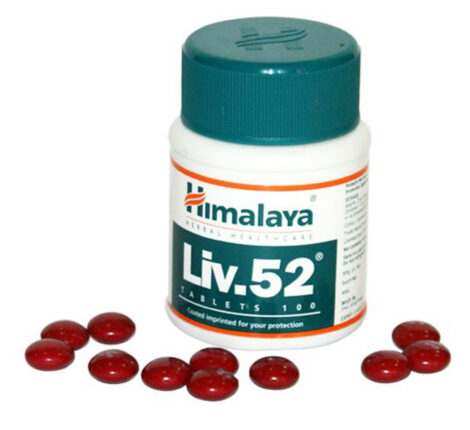Critical Analysis Of Novartis Case In IPR Regime
Introduction:
Patent is an exclusive right granted by the Government to the patentee, for new inventions in exchange of full disclosure of his invention for excluding others from making, using, selling, importing the patented product or process for a time period of 20 years.
The judgement in the case of Novartis AG v. Union of India, pronounced by the Hon’ble Supreme Court has become one of the landmark judgements in the history of India. The judgement came as a relief to many people to have easy access to medicine at a minimum cost, and the availability of life-saving medicines at an affordable rate thus expanding the scope of Section 3(d) of the Indian Patent Act, 2005.
Brief facts of the case:
- Novartis, one of the world’s leading pharmaceutical company had filed patent application in the year 1997 for its anticancer drug “Glivec” which is used to treat Leukemia and Gastrointestinal Tumors. Novartis had claimed patent for beta crystalline form of Imtanib Mesylate.
- At that time, India did not have the provision of product patent, it was only restricted to process patent as defined under Section 5 of the Patent Act, 1970. In the year, 2005 after the amendment of the Patent Act, 1970 Section 5 was repealed and patent came to be granted to products as well.
- After the amendment in the year 2005, patent application for Novartis was taken into consideration but was refused on the ground that it did not satisfy the patentable provision of new and novel under Section 3(d) of the Patent Act, 2005.
- Subsequently, two writ petitions were filed in Madras High Court that stated that Section 3(d) of the Patent Act is unconstitutional as it is violative of Article 14 of the Indian Constitution.
- The suit was transferred to IPAB (Intellectual Property Appellate Board; which was formed during the Novartis Case) by Madras High Court. IPAB dismissed the plea stating that despite the invention fulfilling the criteria of novelty and non-obviousness, it was hit on the ground of Section 3(d) of the Patent Act. This judgement was to prevent ‘ever-greening’ of patents with minor changes in already patented products.
- Novartis filed a SLP (Special leave petition) before the Hon’ble Supreme Court, against the IPAB order under Article 136 of Indian Constitution.
Timeline of Events
| YEAR | EVENTS |
| July 1998: | Novartis files patent application for “Glivec” |
| May-July 2005 | Cancer Patients Aid Association, generic drug makers oppose Novartis’s application |
| January 2006 | Indian Patent Office rejects Novartis’ “Glivec” patent application citing lack of novelty. |
| May 2006 | Novartis files two cases in Madras High Court. |
| August 2007 | Madras High Court rejects Novartis’ position that Section 3(d) of Patent Act is non-compliant with TRIPS and Indian Constitution and transfers case to newly formed IPAB (Intellectual Property Appellate Board) |
| June 2009 | IPAB rules out “Glivec” patent as it did not fulfill the criteria of Section 3(d) |
| August 2009 | Novartis approaches Supreme Court challenging interpretation and application of Section 3(d) by patent office and courts. |
| April 2013 | Supreme Court rejects Novartis’ plea citing violation of Section 3(d) |
Supreme Court Observations
The main issues that came before the Supreme Court were:
- What was the interpretation of Section 3(d) of the Patent Act?
- Whether the invention complies with Section 3(d) of the Patent Act?
- Whether the alleged invention qualifies the test of novelty?
The Hon’ble Supreme Court observed that the product “Glivec” was one of the forms of substance and not the substance as a whole so it has to completely comply with Section 3(d) of the Patent Act. Section 3(d) reads: “the mere discovery of a new form of a known substance which does not result in the enhancement of the known efficacy of that substance or the mere discovery of any new property or new use for a known substance or of the mere use of a known process, machine or apparatus unless such known process results in a new product or employs at least one new reactant. The Apex Court concluded that the meaning of ‘efficacy’ in respect to medicines in Section 3(d) of the Patent Act, refers to ‘therapeutic efficacy’ and thus, do not meet the standard and scope of Section 3(d) of the Act.
The Hon’ble Court also compared the “beta crystalline form of Imatinib Mesylate” with “Imatinib Mesylate” and concluded that none of these contribute to increased therapeutic efficacy in lieu of Section 3(d) of the Patent Act.
The very motive behind the enactment of Section3(d) in the Patent Act, was to put an end to the ever-greening of inventions. It is necessary for an invention to comply with the provisions of the Section 3(d) to be successfully granted patent. In the case of medicines, special care has to be taken because drugs are not sweets so if precautions and utmost care is not taken during the process of granting patent it can cost the life of innocent people. Thus, on these afore mentioned grounds, the plea of Novartis was refused.
Conclusion
The judgement of Supreme Court gave relief to a million of people using “Glivec” at a cheap rate and enjoying the easy accessibility of medicine. These big companies make huge sums of money by putting the life of poor people at stake by acquiring patents over drugs with minor alterations in existing technologies and claiming monopoly over them. The judgement has cleared a way to establish and secure human rights in compliance with right to health. It can be thus concluded that the life of innocent poor people was saved and as India is a developing country, this decision of Supreme Court proved to be the most beneficial for India.




